table of contents
Choux Pastry (known in French as pâte à choux) is a classic base used in both Italian and French pastry. It’s the dough behind cream puffs, éclairs, profiteroles, and many savory appetizers.
Unlike other doughs, choux pastry puffs dramatically in the oven, creating a distinctive hollow center that can be filled with creams, custards, or even savory fillings. Its neutral flavor makes it incredibly versatile.
This unique texture comes from its two-stage cooking process. First, the flour is cooked with water and fat on the stove to gelatinize the starches. Then the dough is baked (or fried, in the case of classic fried cream puffs) to produce a crisp shell and airy interior.
my choux pastry recipe

Equipment
- Stand Mixer
- Baking Sheet
- Pastry Bag
Ingredients
- 450 gr Eggs
- 250 gr Water
- 250 gr Butter
- 250 gr Baking Flour ((W220 or 11% - 12% of proteins))
- 5 gr Salt
Instructions
- Bring water, salt, and butter to a boil until butter is completely melted.
- Add the flour and cook for about 2min while stirring.
- Pour the dough into the stand mixer bowl and turn a few seconds to lower the temperature.
- Start adding the eggs slowly at medium speed, taking care to allow each addition to be absorbed before going on.
- When the mixture will have the right consistency (making it fall with the spatula, it forms a triangle)
- Lightly butter a baking sheet. Using a pastry bag, shape into small walnuts and lightly crush the tips with a wet finger to make sure they grow evenly when baking.
- Bake in a hot oven at 220°C (428°F) for the first 10 minutes. Lower the temperature to 190°C (374°F) and bake for another 15 minutes.
Notes
Nutrition
Tips for Perfect Choux Pastry
- Use the right flour: low- to medium-protein flour (all-purpose or pastry) keeps the shells light and hollow.
- Cook the panade properly: when cooking flour with butter and liquid, keep stirring until the dough pulls away from the pan and leaves a thin film—this ensures proper structure.
- Add eggs gradually: mix in one at a time until the dough forms the classic “V-shape” ribbon from the spatula; consistency matters more than quantity.
- Pipe evenly: hold the bag vertically and apply steady pressure for uniform puffs or éclairs.
- Start hot, then dry: begin with high heat to generate steam, then lower the temperature to finish drying the shells.
- Cool and store correctly: pierce each shell to release steam and keep them crisp before filling.
Common Mistakes to Avoid
- Undercooking the panade: if the flour-butter base isn’t cooked enough, the pastry won’t hold its shape.
- Adding eggs too quickly: this can make the dough too runny; add gradually and check consistency.
- Wrong oven settings: too cool and the pastry won’t puff, too hot and the shells crack or color too fast.
- Opening the oven door too soon: sudden drops in heat cause puffs to collapse.
- Filling while still warm: steam inside will soften the shells and make them soggy.
- Skipping the piercing step: without venting steam at the end, the shells lose crispness.
Filling & Flavor Ideas for Choux Pastry
Choux shells have a neutral taste, so they pair well with many sweet and savory fillings:
- Classic pastry cream (custard): vanilla, lemon, coffee, or chocolate.
- French Chantilly / whipped cream: lightly sweetened; fold in mascarpone for stability.
- Italian Chantilly or Diplomat cream: pastry cream lightened with whipped cream (great for éclairs).
- Mousses: chocolate, hazelnut, pistachio, or coffee.
- Fruit-forward: pastry cream + fresh berries or compote.
- Savory: cream cheese & herbs, smoked salmon mousse, pâté or chicken salad (mini puffs).
Tip: For clean fills, use a small round piping tip and poke the shell on the side or bottom.
BASIC INGREDIENTS
Each ingredient in pâte à choux plays a precise role. Balancing them is what makes shells that are hollow, crisp outside, and tender inside—perfect for cream puffs and éclairs.
- Liquids (water or milk): Water maximizes steam and lift; milk adds lactose and proteins that promote more browning and a slightly richer taste. Many bakers use a 50/50 mix for color + rise.
- Fats (butter preferred): Butter creates the crisp crust and helps shape the inner cavity by moderating how steam escapes. Oil is used in some traditions, but butter yields the cleanest flavor and structure.
- Flour (low protein): Choose all-purpose or cake flour on the lower-protein side (roughly EU W 180–200). High-protein bread flour can make shells absorb fillings faster and feel chewy.
- Eggs: They’re both the liquid that generates steam and the proteins that set the structure. Add eggs gradually to reach the classic “V-shape” ribbon from the spatula—this consistency is more important than a fixed quantity.
- Salt: Enhances flavor and supports even browning. A practical rule is about 0.5% of total dough weight.
Pro tip: After piping, lightly smooth the peak with a damp fingertip for a more uniform result, and dust with a touch of powdered sugar if you want extra color during baking.
COOKING AND STORAGE
For the best oven spring, place choux on a lightly greased baking sheet, then wipe away any excess so the dough can grip the surface and rise evenly. A micro-perforated nonstick sheet or tray also works beautifully because it helps drive off moisture for a dry, crisp shell.
Conventional (no-fan) ovens give the smoothest, most even rise. If you only have convection, shield the airflow: bake on a middle rack and set a second empty tray above the puffs to soften the fan’s impact.
Recommended temperatures: start hot to build steam, then dry. A reliable pattern is 400–425°F (200–220°C) for 10 minutes, then reduce to 375–385°F (190–195°C) and continue until deeply golden and light when lifted. In the final minutes, crack the door slightly to vent steam and finish drying the shells.
Cooling & storage: once baked, pierce the side or bottom of each puff to release residual steam and cool on a rack. Unfilled shells keep 1 day at room temperature in an airtight container. For longer storage, freeze the empty shells in freezer-safe bags for up to 30–60 days; re-crisp straight from frozen at 300°F (150°C) for a few minutes before filling.
Make Ahead & Freezing
- Unbaked dough: best piped fresh; freezing raw shapes can lead to uneven puff.
- Empty baked shells: cool, then freeze in bags for up to 2 months. Re-crisp at 300°F (150°C) for a few minutes before filling.
- Filled puffs: enjoy the same day for maximum crispness. With whipped-cream fillings, refrigerate and serve within 24 hours.
Pro tip: Assemble close to serving time; humidity softens choux quickly.
Troubleshooting: Why Did My Cream Puffs or Éclairs Fail?
- Flat or deflated: oven too cool or door opened early; bake longer to set structure.
- Cracked shells: oven too hot or uneven piping; smooth peaks with a damp fingertip.
- No hollow center: panade undercooked or eggs mis-measured—cook the dough until it leaves a film on the pan and add eggs gradually to “V-ribbon” consistency.
- Soggy inside: underbaked or not vented; pierce shells after baking and dry briefly in the oven.
- Greasy texture: too much fat or butter too warm; weigh ingredients and cook the panade properly.
- Collapsed after filling: shells not fully dry or filling too warm; cool completely and use chilled fillings.
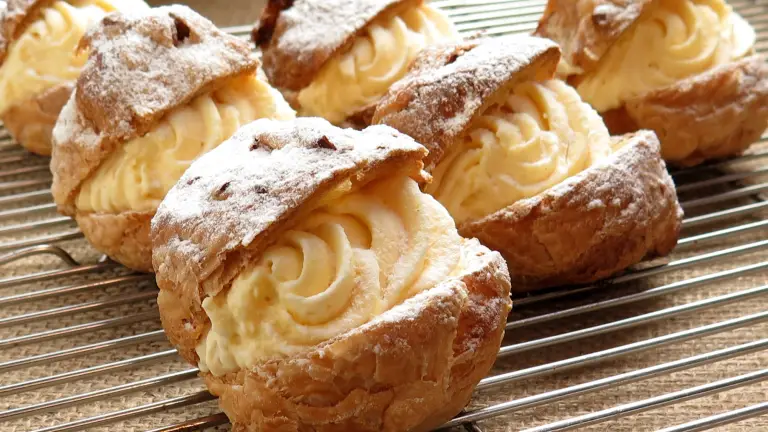

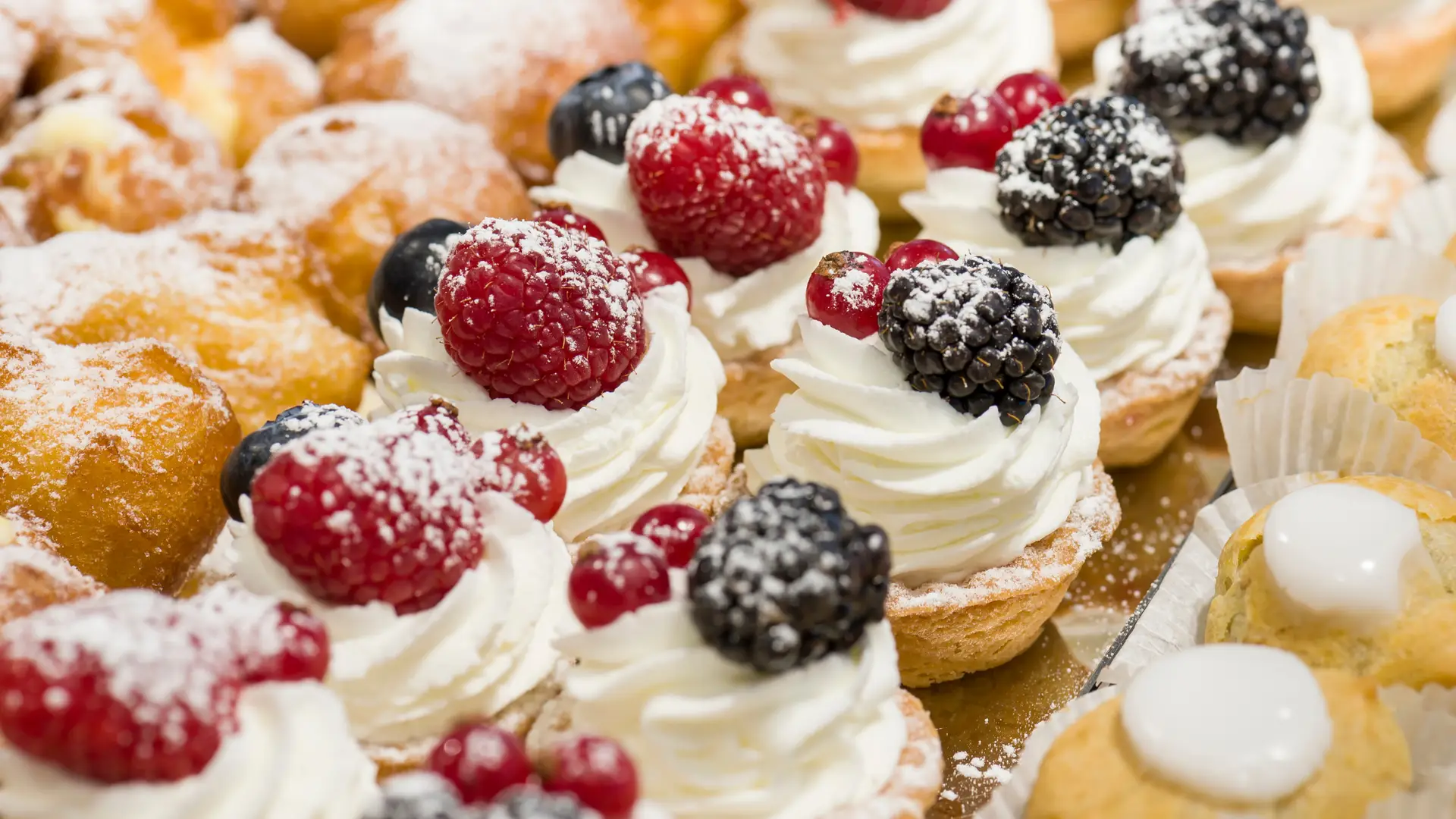



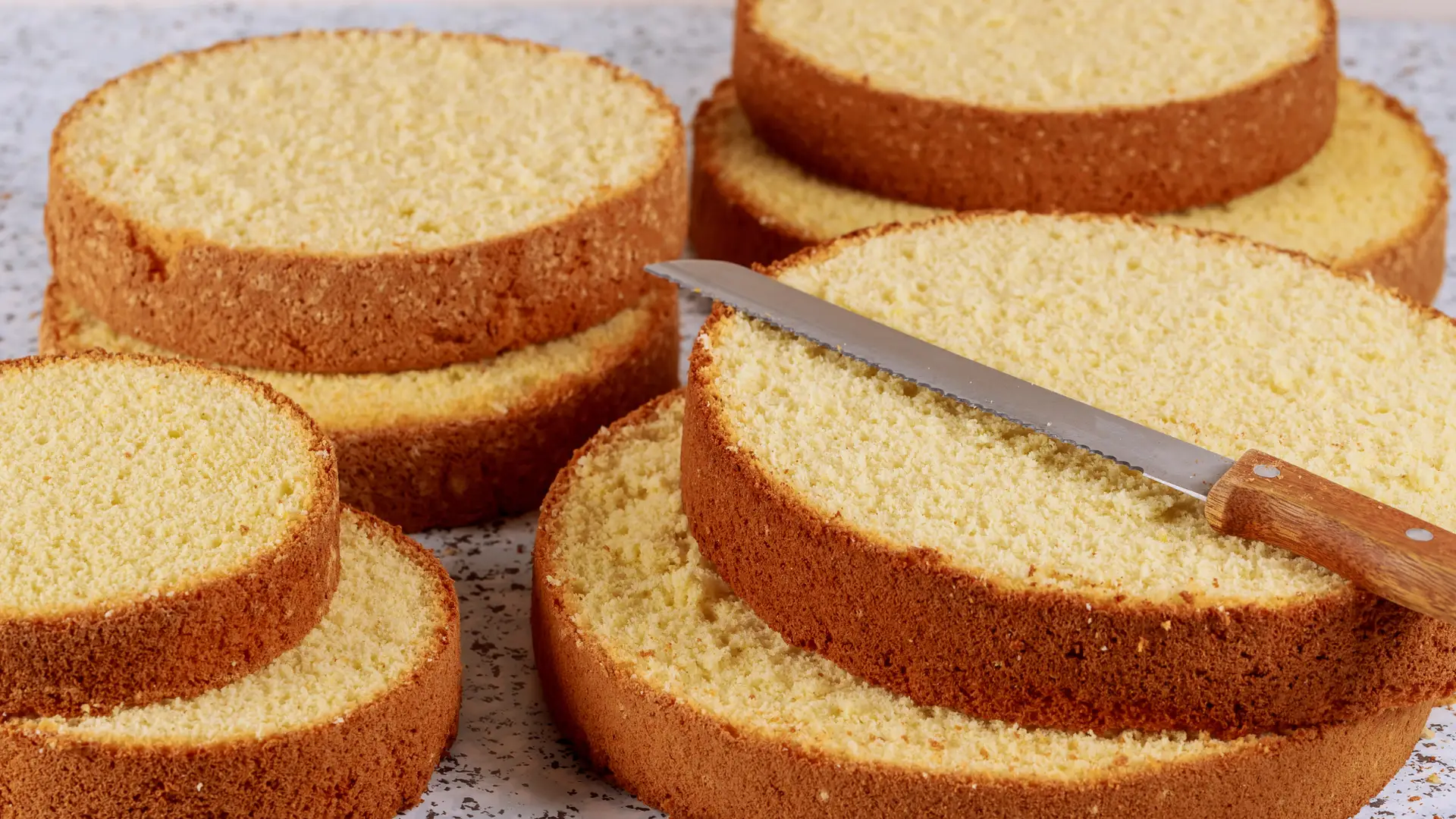
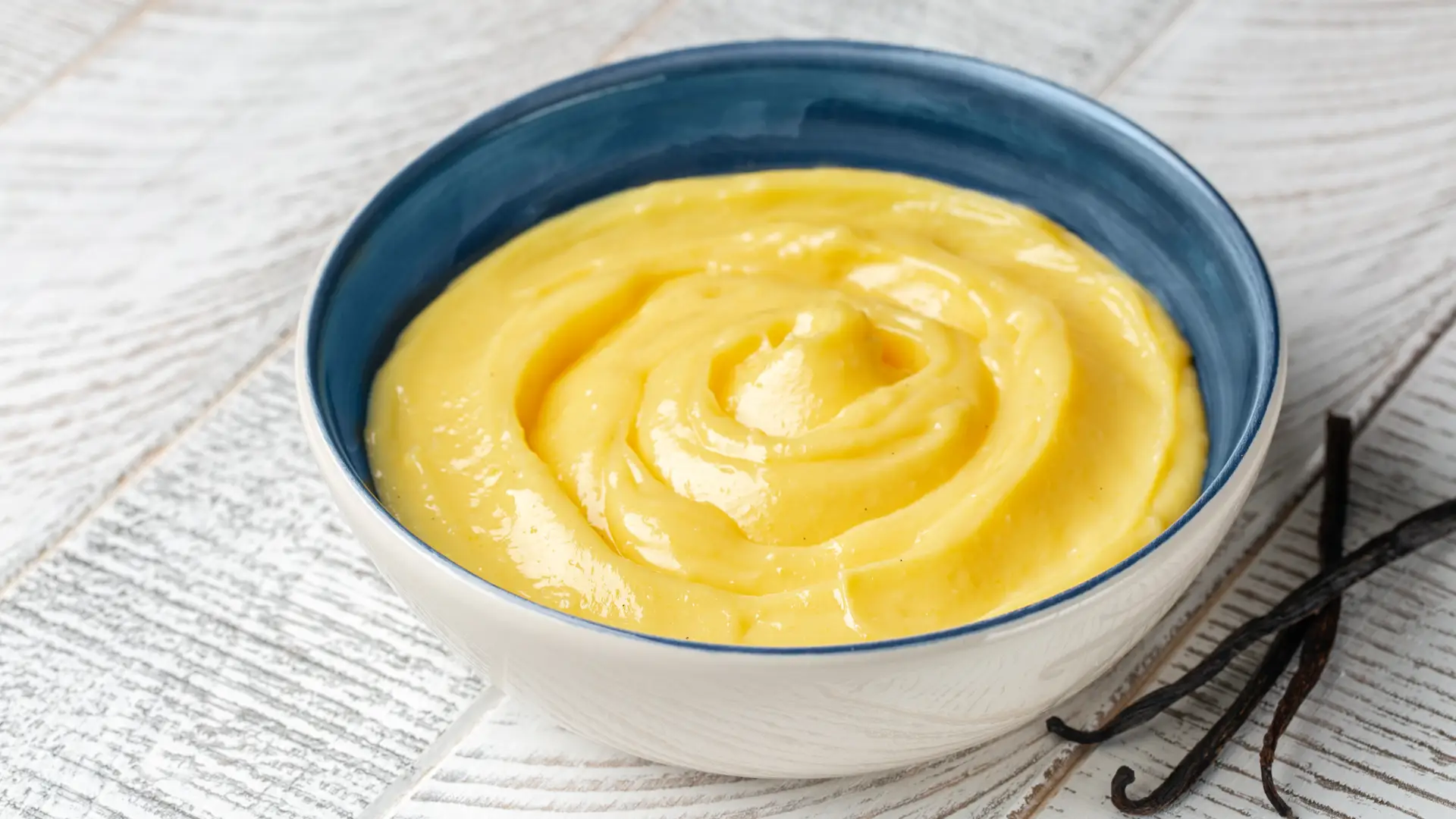

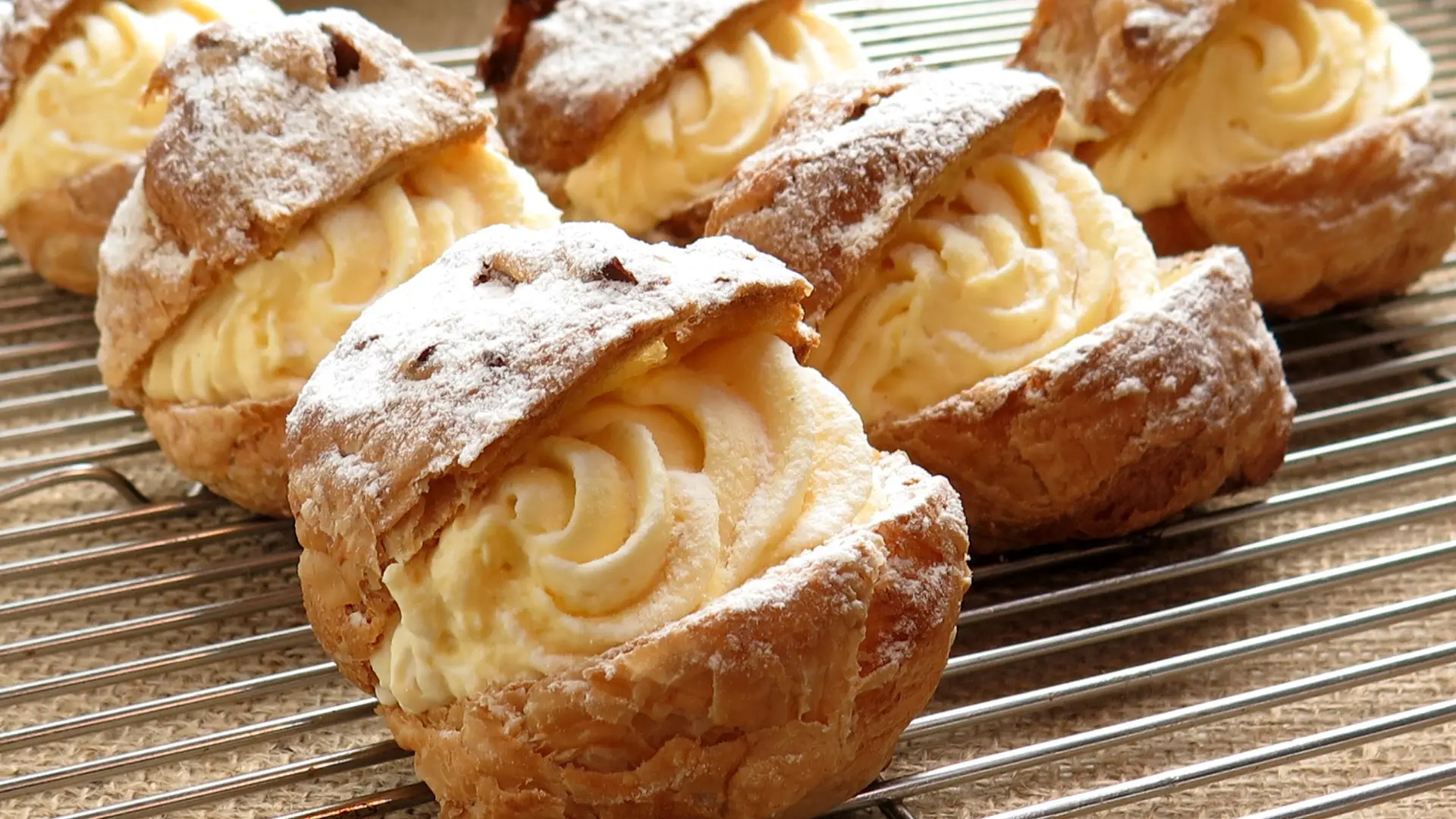




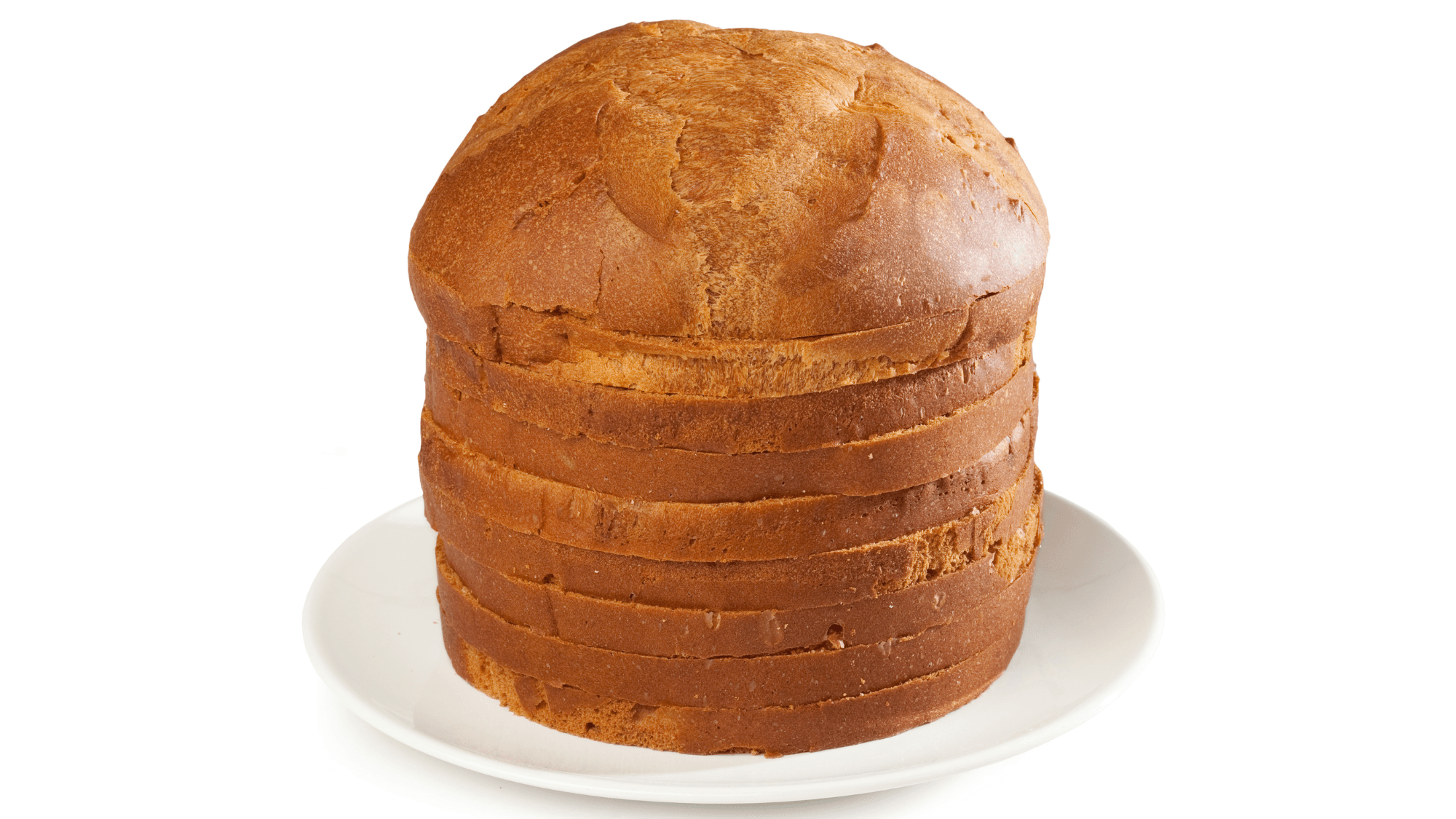








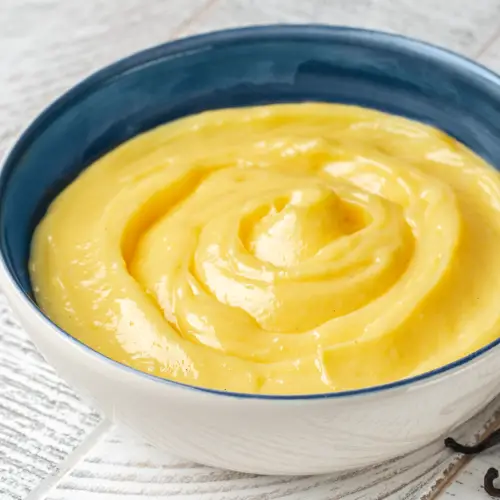


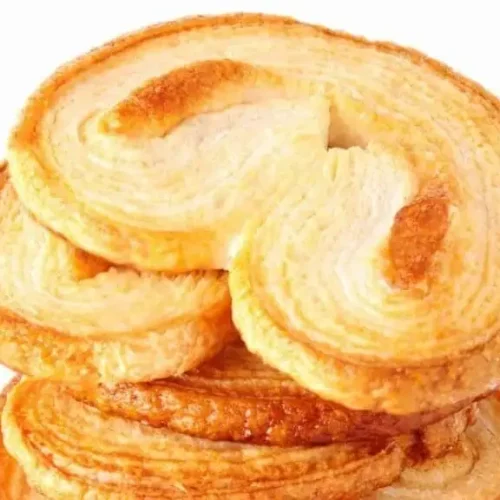


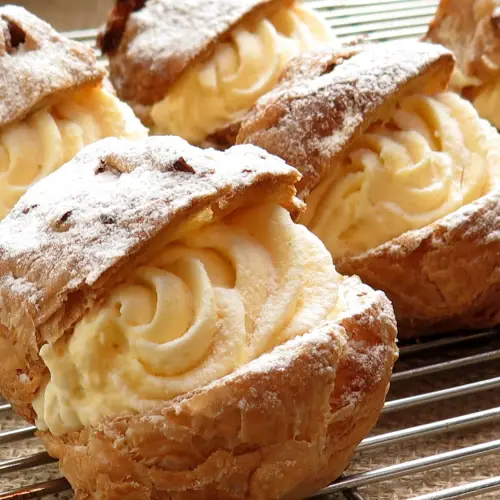
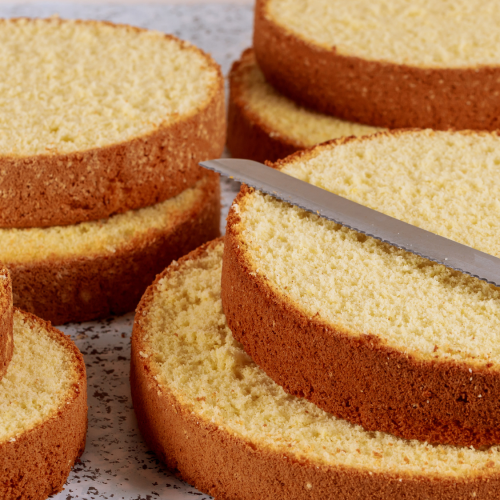

1 comments available
Potreste darmi gentilmente un indicazione su quale molino acquistare la farina, normalmente utilizzo il molino quaglia.
Desidero farvi i complimenti per la vostra ricetta del panettone con lievito di birra, spettacolare, spero pubblichiate anche la ricetta per il pandoro.